SUB-ZERO ICBBI Series ICB Built in Refrigerator Instruction Manual
![]() Troubleshooting
Troubleshooting
ICB Built-In (ICBBI) Series (SWS #4380000)
TROUBLESHOOTING GUIDES
This section of the manual contains:
- The Fault Code Table with LCD Correlation Diagram
- The Fault Codes Troubleshooting Guide
- The General Troubleshooting Guide.
- The Sealed System Diagnostic Tables
USING THE FAULT CODE TABLE / LCD DIAGRAM & FAULT CODE TROUBLESHOOTING GUIDE
- Initiate Diagnostic Mode – With the unit ON, press and a COLDER key, and press the POWER key, then release both keys (See Figure 7-1).
NOTE: If Fault Codes have already been logged the control will enter Fault Code Recall Mode instead of Diagnostic Mode. If this happens press the ALARM key to shift the control into Diagnostic Mode. Do NOT skip step 2 below if Fault Codes are already present. - Initiate Self Test Mode – With the unit ON and in Diagnostic Mode, press and hold COLDER and WARMER keys, then the POWER key, then release all three keys (See Figure 7-2). Self Test Mode will last for five (5) seconds.
- Initiate Fault Code Recall Mode – With the unit ON, press and a COLDER key, and press the POWER key, then release both keys (See Figure 7-3). (See the Fault Code Table with LCD Correlation Diagram on pages 7- 3 and 7-4)
NOTE: Press a WARMER or COLDER key to toggle through the Fault Codes. - Locate the matching code(s) in the left column of the Fault Code Troubleshooting Guide (starting on page 7-5).
- Follow the Test/Actions as listed in the right column next to the code.
- If Fault Codes are not present but the appliance is having problems, move onto the General Troubleshooting Guide.

The Fault Code Table with LCD Correlation Diagram
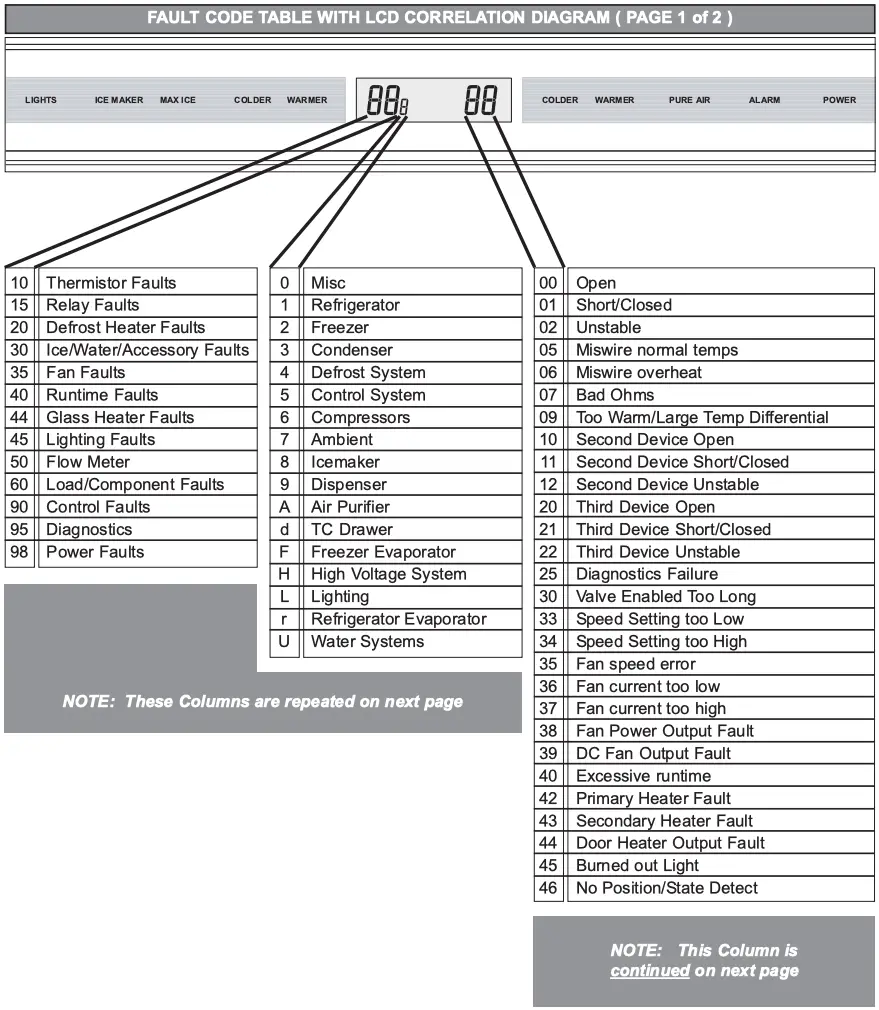
NOTE: There are three fault codes not covered in this table, they are “LO C”, “H2 LO” and “dO Or”. These are explained under the heading of “Possible Instruction and Error/Fault Indicators” in section 3.
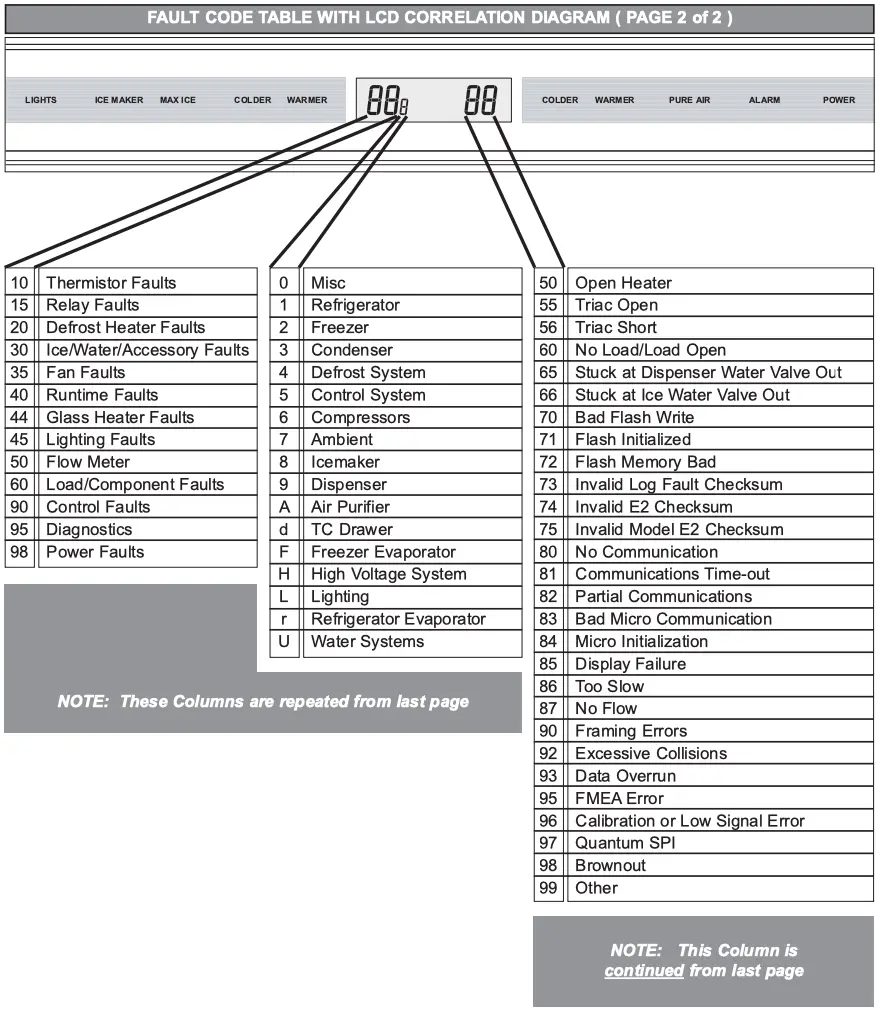
NOTE: After repairs, clear Fault Codes by pressing the ALARM key for fifteen (15) seconds. Failure to clear Fault Codes will result in the highest priority fault indicator reappearing on the LCD when the unit is switched back ON.
The Fault Codes Troubleshooting Guide

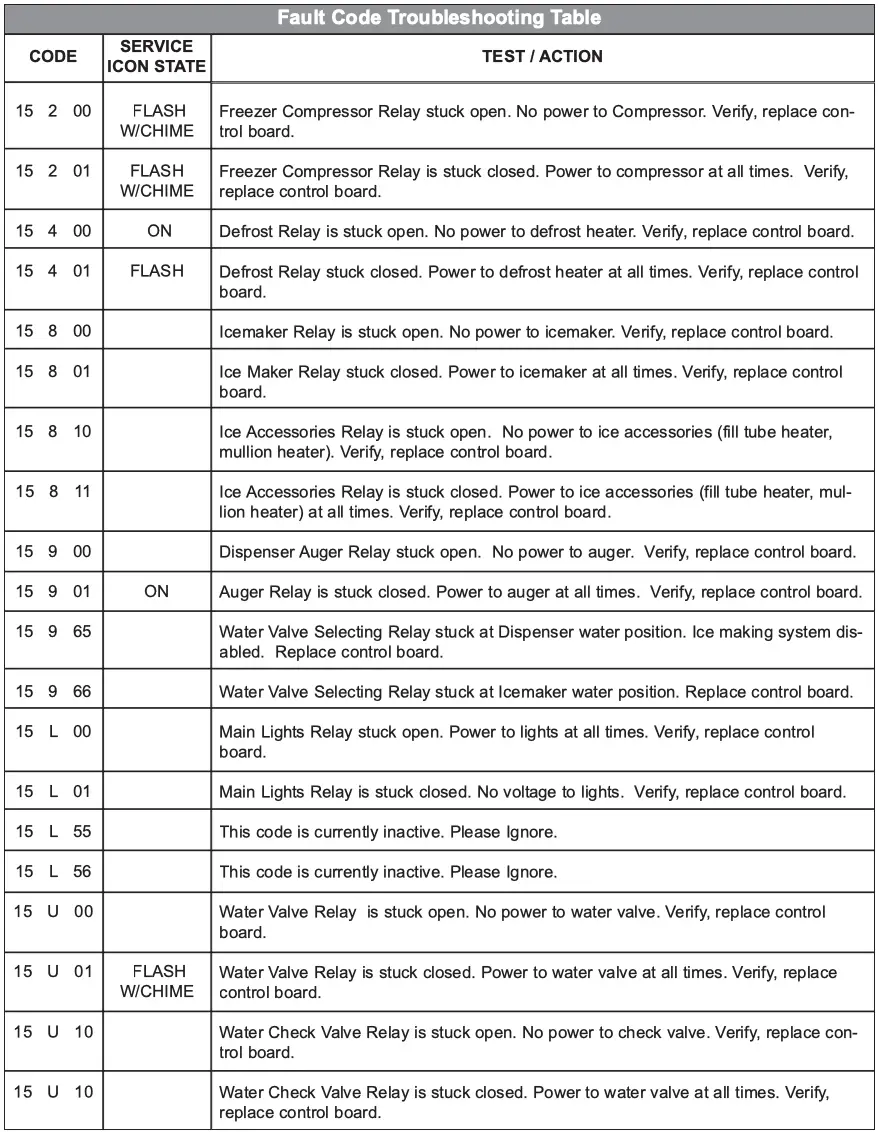
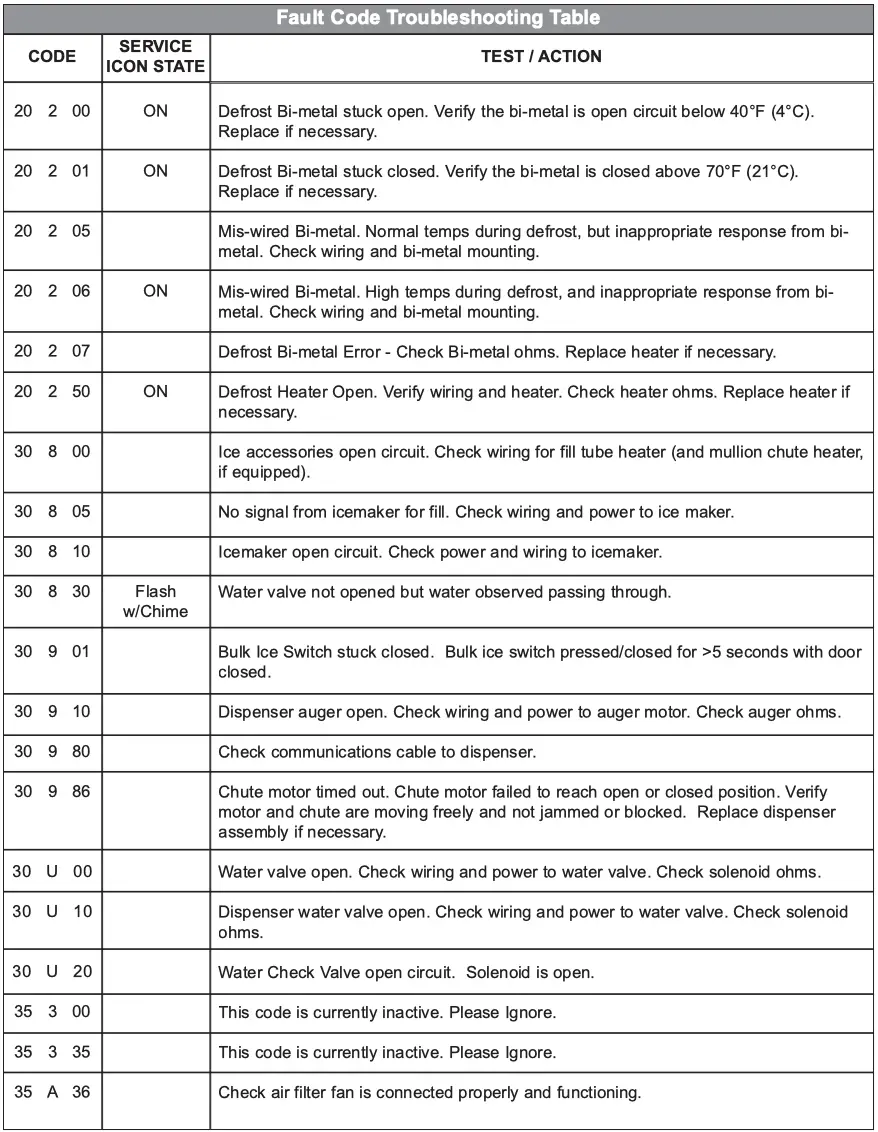
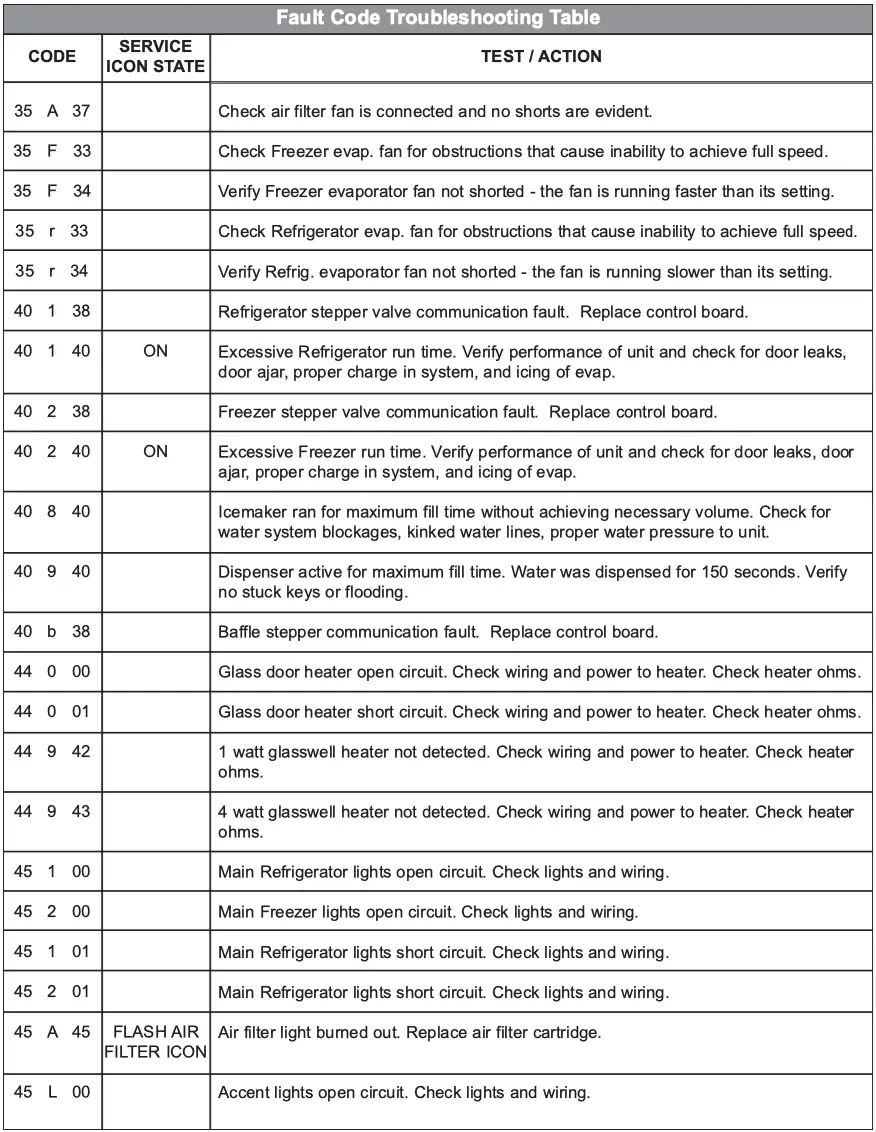
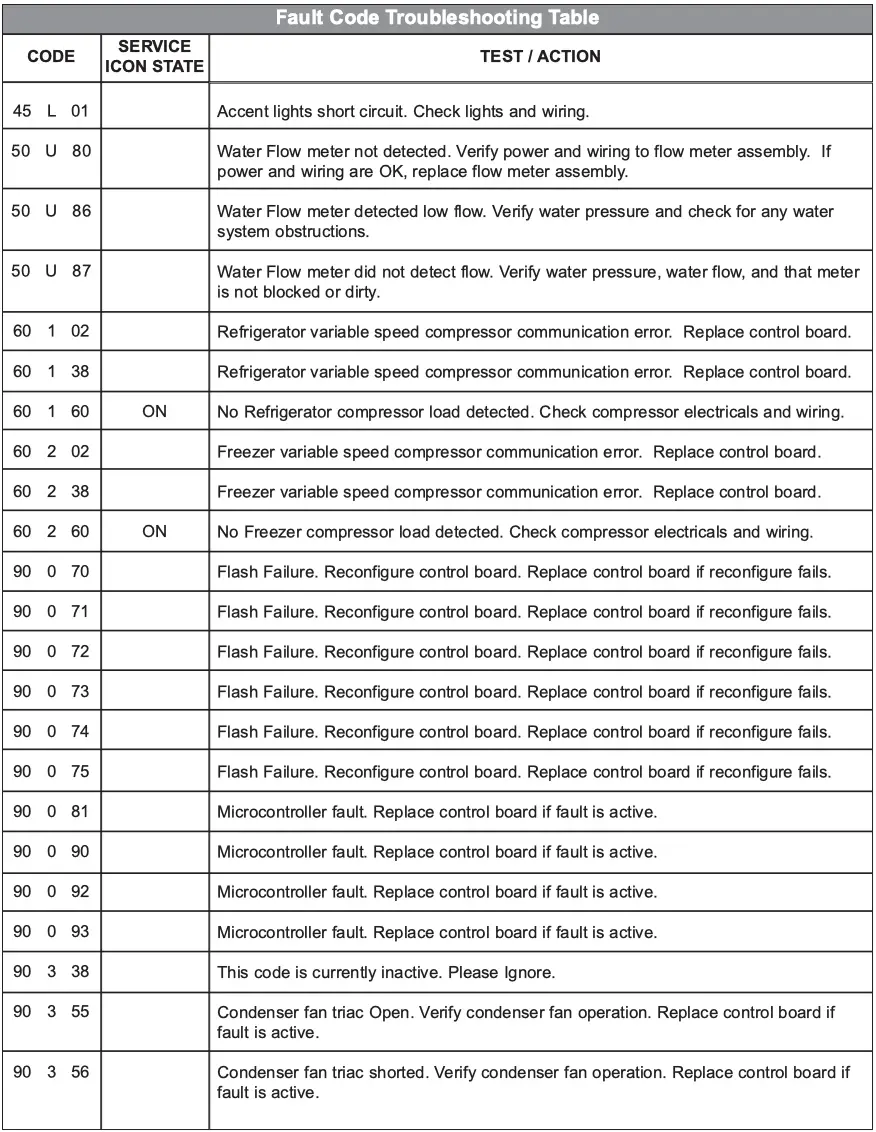


The General Troubleshooting Guide
NOTE: After repairs, clear Fault Codes by pressing the ALARM key for fifteen (15) seconds. Failure to clear Fault Codes will result in the highest priority fault indicator reappearing on the LCD when the unit is switched back ON.


The Sealed System Diagnostic Tables
NORMAL OPERATING PRESSURES TABLE NOTES:
- Only enter the sealed system to check pressures if the Fault Code Troubleshooting Guide and General Troubleshooting Guide could not pinpoint the cause of the temperature problem.
- Always use solder-on process valves when entering the sealed system. Do NOT use bolt-on process valves as they are prone to leak.
- Whenever servicing the sealed system, the high-side filter-drier MUST be replaced.
- Pressures listed below are not indicative of initial pull down, but rather of a steadily running and properly functioning appliance.
- Pressures listed are for reference only, as actual pressure readings may vary because of one or more of the following reasons:
- Ambient temperatures (Pressures are based on a 21°C (70°F) Ambient).
- Temperature set-points (Pressures listed are based on set-points of -18°C (0°F) in freezers and 3°C (38°F) in refrigerators)
- Food load quantity and temperature.
- Condenser cleanliness.
- Whether or not one or both refrigeration systems are operating.
- Gauge calibration.


#7040319 – Revision A – December, 2015
Documents / Resources
 |
SUB-ZERO ICBBI Series ICB Built in Refrigerator [pdf] Instruction Manual BI-257, BI-271, ICBBI Series ICB Built in Refrigerator, ICBBI Series, ICB Built in Refrigerator, Built in Refrigerator, Refrigerator |